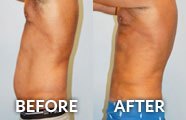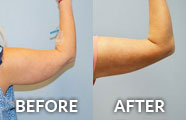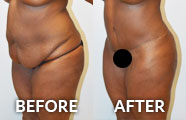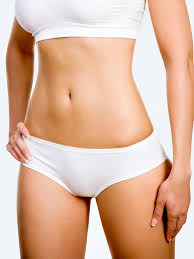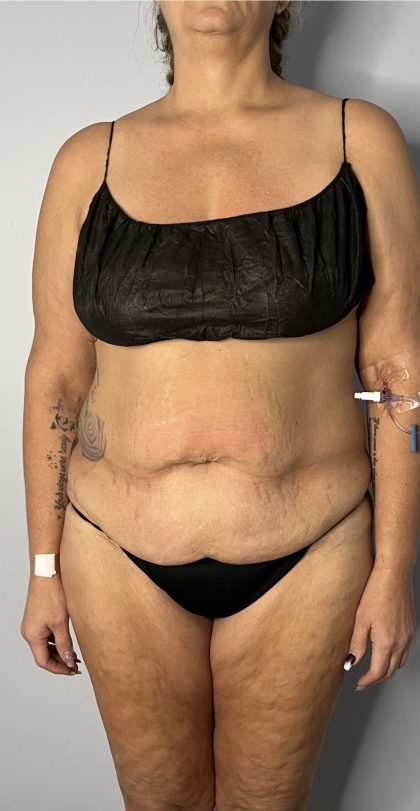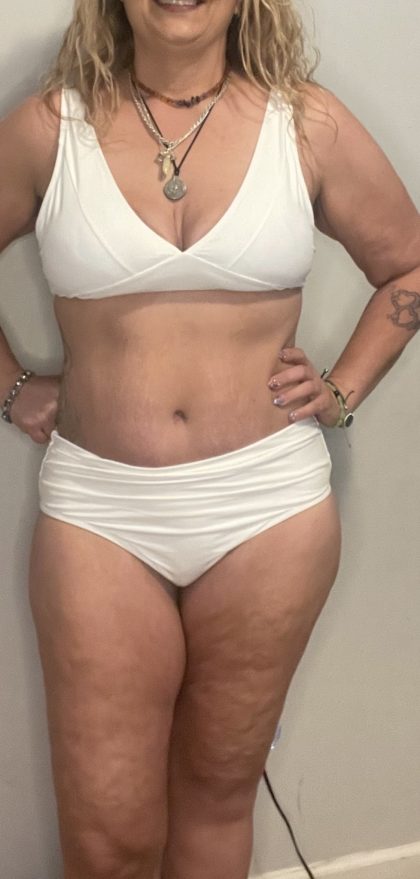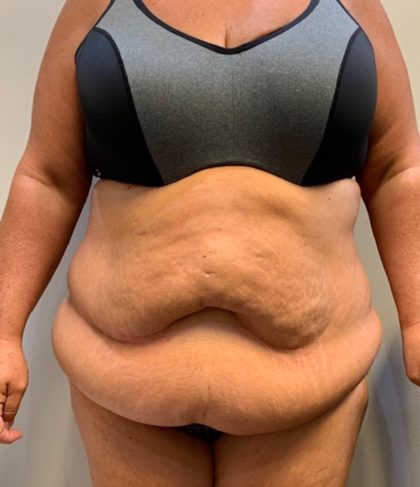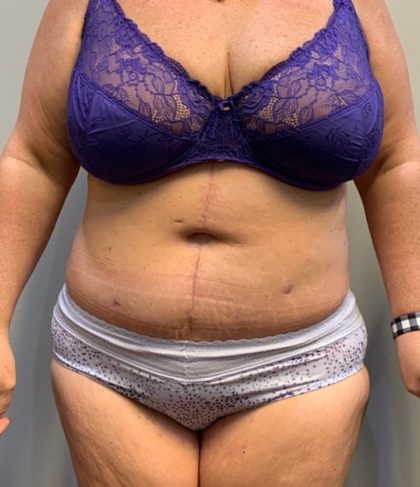Liposuction and tummy tucks are two different surgical procedures intended to sculpt and contour the midsection. Both treatments result in a flatter, tighter, and smaller stomach. It’s essential to understand the differences between the two in order to make a more informed decision for yourself.
Do you feel like you haven’t unlocked your “real” body yet, no matter how hard you diet and exercise? Conveniently located in Chattanooga, Tennessee, and Calhoun, Georgia, Southern Surgical Arts helps remove unwanted fat gently and effectively.
Schedule a consultation, and let’s start a conversation about your aesthetic goals after you brush up on what these procedures entail.
What Is Liposuction?
Liposuction is a surgical fat-removal process. It has evolved tremendously over the past four decades into one of the most popular procedures in plastic surgery.[1] The process involves using a tube inserted into the body and negative pressure to suck out the fat. It is ideal for people who have unwanted areas of fat that won’t go away with exercise.
Types of Liposuction
- Suction-Assisted Liposuction
- The oldest and most common form of liposuction. Considered the default.
- Requires general anesthesia and can be used on the buttocks, thighs, legs, abdomen, back, and arms.
- A small incision is made over the area to be treated, then a hollow needle is inserted through the incision and proceeds to suck out the fat cells.
- Recovery time can be 1-5 months, with an additional 3-6 months for the body’s final form to take shape.
- Risks of bleeding, bruising, lumpiness, dimpling, and other imperfections.
- Patients may need to have several treatments for ideal results.
- Liposculpture
- Liposculpture is a method of body contouring.
- Treats little pockets of fat instead of large areas.
- Gives you more muscle tone and shapeliness.
- Instead of just removing the fat, liposculpture also moves it around for a more idealized shape.
- Performed in tandem with liposuction to achieve a desirable silhouette.
- VaserLipo
- Also known as ultrasound-assisted lipo.
- Uses high-frequency sound waves to dissolve fat cells to make them easier to suction out.
- Often used in tougher fatty areas like the back or a man’s chest.
- Can quickly remove stubborn fibrous fat that may have otherwise needed several treatments.
- Smartlipo
- Uses lasers with two distinct frequencies. One frequency to liquefy fat, the other to tighten tissues and stimulate collagen production.
- Helps tighten skin more than any other lipo procedure.
- Treatment is faster, with recovery time lasting just a few days.
- The most precise type of lipo.
- Allows sculpting in any area of the body and face.
- Potential burning and blistering risks.
What Are Tummy Tucks?
A tummy tuck is a cosmetic surgery procedure known as an abdominoplasty that aims to provide contour to the abdomen, making it thinner, smoother, and firmer. The process removes excess fat and skin from the lower and middle abdomen and tightens the abdominal wall’s muscles and connective tissues. It is ideal for candidates who have excess skin and tissue around the stomach in addition to any excess fat.
Types of Tummy Tucks
- Full Tummy Tuck
- Designed to enhance the upper and lower abdomen.
- Usually requires a week of downtime after surgery.
- Patients can resume activities after three weeks.
- Patients can resume exercising after six weeks.
- Mini Tummy Tuck
- Designed to enhance only the lower abdomen (below the belly button).
- Involves creating a small horizontal incision between the hipbones, removing the excess skin, and tightening the muscles underneath.
- Healing usually takes up to two weeks.
- Exercise and other strenuous activities can be resumed six weeks after surgery.
- Extended Tummy Tuck
- Involves everything that a full tummy tuck entails with the addition of enhancing the patient’s flanks, or “love handles.”
- Procedure includes making an incision longer than a full tummy tuck. Clothes can hide scarring.
- Recovery times are similar to that of full tummy tucks.
- Body Lift
- Similar to an extended tummy tuck, but for the whole body.
- It can be applied to the lower torso and upper legs and the abdomen, waist, inner/outer thighs, buttocks, and hips.
- Ideal for patients who have undergone gastric bypass or any other weight loss procedure wanting to get rid of excess skin.
Before & After Photos
Before and After Photos
Benefits
Liposuction
- Enhances the proportion, shape, and contour of the body through the elimination of problem areas.
- Can help remove lipomas (benign fatty tumors).
- Can help treat gynecomastia (hormone imbalance in men causing swollen breast tissue).
- Can treat lipodystrophy syndrome (a metabolic disturbance causing excessive fat in certain areas of the body and none elsewhere).
- Results are immediate.
- Can inspire patients to maintain healthier habits like diet and exercise.
- Increased self-confidence & self-esteem.
Tummy Tuck
- Flatter abdomen and narrower waistline.
- Clothes fit better.
- Removal of loose, hanging skin.
- Eliminates stretch marks.
- Can improve posture.
- Corrects hernias.
- Reduces stress urinary incontinence.
- Increased self-confidence & self-esteem.
Candidates
Both procedures appeal to people with similar cosmetic goals, but it’s important to note their distinctions.
Liposuction
Lipo may be ideal for somebody aiming to extract small fat deposits, usually found on the hips, thighs, buttocks, or stomach. Lipo is not to be used as a tool for losing weight. The right candidate has an average weight and good skin elasticity.
Tummy Tuck
Tummy tucks may be ideal for somebody who wants to remove excess skin in addition to excess fat. Treatment is excellent for women who have recently given birth or for anyone who has lost a significant amount of weight. Restoring flatness and contouring to their midsection is the ultimate goal.
If you think you’d be the right candidate for a tummy tuck, please reach out to Southern Surgical Arts, and we can get you set up with a consultation with Dr. Deal, Dr. Gardner, Dr. Gusching, or Dr. Barker.
Preparation
Liposuction
In preparation for lipo, you may be asked to:
- Get a medical evaluation or lab testing.
- Stop smoking.
- Avoid anti-inflammatory drugs, aspirin, and herbal supplements, which can increase bleeding.
- Take specific medications, or adjust your current doses.
Liposuction must be performed in a hospital, a licensed ambulatory surgical center, or an accredited office-based surgical facility.
You will want to arrange for a friend or loved one to pick you up and drive you home after your procedure.
Tummy Tuck
In preparation for a tummy tuck, like liposuction, you may be asked to:
- Get a medical evaluation or lab testing.
- Stop smoking.
- Avoid anti-inflammatory drugs, aspirin, and herbal supplements, which can increase bleeding.
- Take specific medications, or adjust your current doses.
Again, like liposuction, tummy tucks must be performed in a hospital, a licensed ambulatory surgical center, or an accredited office-based surgical facility.
You will also want to arrange to be driven home after your procedure.
Procedure
A plastic surgeon performs both procedures since they require the use of anesthesia and incisions.
Liposuction
- Anesthesia
- Your doctor will administer either local anesthesia, intravenous sedation, or general anesthesia.
- Incision
- Your doctor will proceed to make a series of small incisions.
- Diluted local anesthesia is injected to lessen bleeding and trauma.
- The cannula, a thin hollowed out needle, is then inserted into the incisions to dislodge excess fat in a back-and-forth motion.
- The loosened fat is then sucked out of the body through a vacuum apparatus attached to the cannula.
Tummy Tuck
- Anesthesia
- Your doctor will administer either intravenous sedation or general anesthesia.
- Incision
- Your doctor will proceed to create a horizontal incision in the area between the belly button and the pubic hairline.
- Once the skin is lifted, the abdominal muscles are repaired.
- The skin is then pulled down, with excess skin being cut off, then sutured back together.
- Closing Incisions
- Sutures, skin adhesives, tapes, or clips close the skin incisions.
Recovery
Liposuction
Once you’re bandaged up, your doctor will give you instructions that may include:
- When to follow up with your surgeon
- Medications to take or apply
- How to care for the treated area
It can take a couple of months for swelling to fade. When it does, your new contours will continue to evolve.
Tummy Tuck
After you get bandaged up, you may be given instructions that include:
- When to follow up with your surgeon.
- Medications to take or apply.
- How to care for the treated area.
Results
Liposuction
It might take a few weeks to enjoy the full effect of your liposuction procedure. You will require some time to process the tumescent fluids that were administered during surgery. But as the swelling subsides, your slim, trim new profile emerges!
Tummy Tuck
Within a week or two, the swelling should die down. Your tummy tuck will result in a flatter, firmer, more proportional stomach.
Complementary Procedures
Liposuction can be performed in conjunction with various other body contouring procedures. If fat removal leaves your abdominal region with unwanted excess skin, then a tummy tuck may be just what the doctor ordered. SSA also offers tightening and toning services, such as BodyTite and FaceTite. These are minimally invasive procedures that deliver maximum results!
Like what you’ve read so far? Check out our blog, where you can find all sorts of content relating to procedures, news articles, and updates on any specials we may have. We hope to see you soon!
FAQ
What is liposuction?
Liposuction is a surgical fat removal process that uses suction to extract fat cells.
What areas of the body can liposuction treat?
Liposuction can treat the abdomen, upper arms, buttocks, calves, ankles, chest, back, hips, thighs, chin, and neck.
What are the risks of liposuction?
Risks of liposuction include contour irregularities, fluid accumulation, infection, numbness, embolism, and kidney and heart problems.
Is liposuction painful?
You won’t feel any pain during the procedure, but recovery can be painful once the anesthesia wears off.
How long is the procedure?
Liposuction procedures can take up to one or two hours.
How long is recovery?
Pain and soreness generally fade away at around the one month mark. Swelling may take months to subside.
Can I combine lipo with other procedures?
Yes. Liposuction can be safely combined with abdominoplasty.[2]Other services, like our BodyTite and FaceTite, can also be implemented.
What is a tummy tuck?
A tummy tuck is a surgical procedure that flattens and firms the abdomen while trimming away excess skin.
What are the risks of a tummy tuck?
Risks of tummy tucks include skin sensation changes, unexpected scarring, poor healing, fluid accumulation, and tissue damage.
Are tummy tucks painful?
Most of the pain is experienced after surgery. Pain medications can be prescribed to treat it.
How long is the procedure?
Depending on the level of surgery, tummy tucks can take anywhere from one to five hours.
How long is recovery?
Tummy tucks usually take about six weeks of recovery.
Can I combine tummy tucks with other procedures?
Yes. You can undoubtedly combine tummy tucks with liposuction.
References
- Phillip J. Stephan, MD, FACS, Jeffrey M. Kenkel, MD, FACS, Updates and Advances in Liposuction, Aesthetic Surgery Journal, Volume 30, Issue 1, January 2010, Pages 83–97, https://doi.org/10.1177/1090820X10362728
- Trussler, A. P., MD, Kurkjian, J. T., MD, Hatef, D. A., MD, Farkas, J. P., MD, & Rohrich, R. J., MD. (2010). Updates and Advances in Liposuction. Plastic and Reconstructive Surgery, 126(3), 1063-1074. doi:10.1097/PRS.0b013e3181e60537
